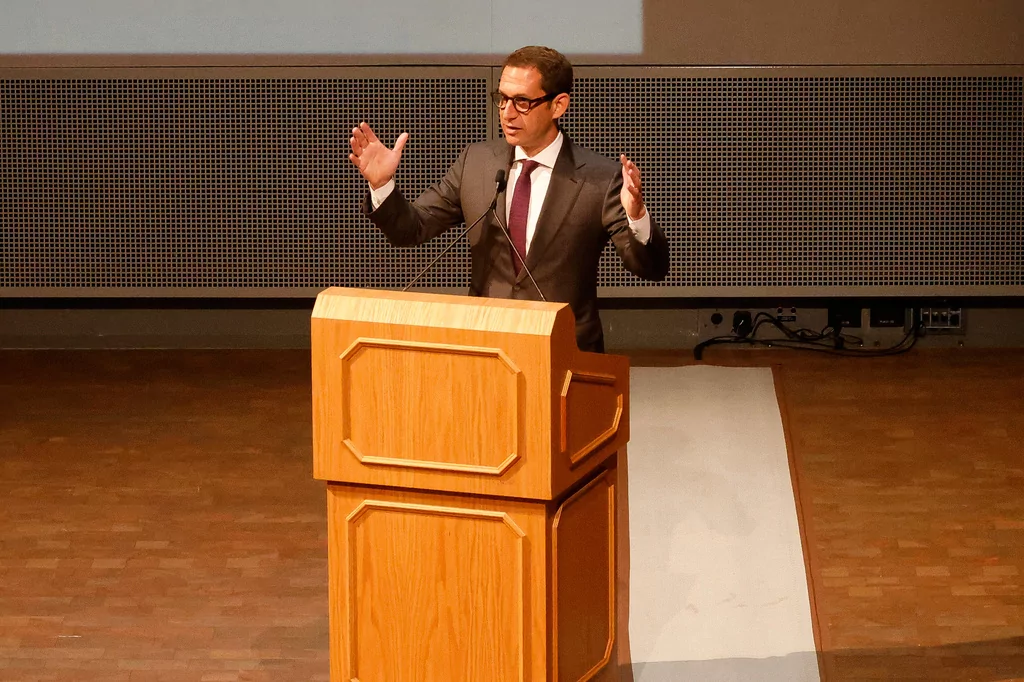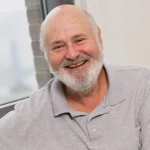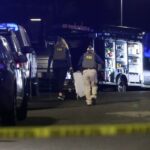
When political novice Daniel Lurie won the San Francisco mayoral race in November, he inherited a hefty to-do list and the unenviable task of cleaning up a once-great city that had fallen into disarray.
Now, 100 days later, Lurie believes the city is on its way, as targeted approaches to homelessness, crime, and attracting businesses back to the downtown area are starting to pay off.
Last year, the billionaire heir defeated incumbent London Breed and a crowded field of rivals to win the mayoral race, earning his first term leading California’s fourth-largest city.

Lurie told the Washington Examiner that Breed and his other opponents “underestimated not only us, but they underestimated the people of San Francisco and their desire for change and accountability.”
Since being inaugurated on Jan. 8, Lurie has had to navigate tricky terrain. He came in as an outsider and knew he wasn’t everyone’s top pick to run the city. Still, he insists there has been a “vibe shift” since becoming mayor.
“The vibe shift is, I believe, real in our city,” he said. “There’s a sense of hope and optimism that people haven’t seen for a long time. I have a lot of people saying, ‘I’m proud to be a San Franciscan for the first time in a while.’ Now, I’ve always been proud. That’s why I ran.”
One misconception he wants to dispel is that city services are only a Monday through Friday operation. He told the San Francisco Examiner that residents should be able to count on their government for help whenever needed.
“You know, what we have proven as a city is we can pull off big events, and we can do it really well, and I can go through the list, but you’ve heard me — NBA All-Star Game and J.P. Morgan — but we have to do that for the people of the city and county of San Francisco every day, and I think that’s the muscle that we gotta build out,” he said. “I think coming off of [COVID-19] where everybody was at home, I think we have to get back to delivering city services Saturday, Sunday, 10 p.m. on a Friday night, 10 p.m. on a Sunday night. That’s a culture that we’ve got to build, but people are incredibly hardworking in the city family.”
He added that being mayor doesn’t mean sitting behind a desk or simply announcing initiatives at press conferences.
“You have to be out walking the street, and I happen to love that part, so I’ve taken to that quite easily, and I love it,” he said. “I love meeting people. I love seeing our [Department of Public Works] and Parks and [Recreation] and [the San Francisco Municipal Transportation Agency] folks and our police and fire and [Department of Emergency Management] folks out working because it’s hard. I think they need to see me out there.”
During his first few months at the helm, Lurie, who campaigned as a tough-on-crime candidate, has made inroads on several key fronts, though his office has also been forced to acknowledge the new mayor might have been overzealous in some of his campaign promises.
Here’s a look at some of the highs and lows.
Homelessness
Lurie campaigned on a promise to build 1,500 shelter beds and solve street homelessness within his first six months in office. By the end of January, his office admitted that the promise was a “slip up” and he needed more time.
His staff told the San Francisco Standard that the six-month clock didn’t start until mid-March when Lurie unveiled his “Breaking the Cycle” directive.
The overarching objective of it is to get homeless people off the streets and connected to recovery services while preventing others from becoming homeless.
The plan includes “immediate steps and long-term reforms that will allow us to coordinate more effectively across departments, make policies rooted in evidence and reliable data, and hold ourselves accountable for outcomes,” Lurie said.
The directive is broken into three stages: Goals within the next 100 days, six months, and one year.
The first 100 days include restructuring various street outreach teams and condensing often overlapping efforts into five neighborhood-based squads. These squads focus on enforcement, treatment, and cleaning.
Sharky Laguana, a member of the city’s Homelessness Oversight Commission, praised Lurie’s health and homelessness policy chief, Kunal Modi, for posting data on the Sixth Street project to his X feed in an example of the transparency Lurie promised in his campaign.
“I find it reassuring that people are paying attention, monitoring the outcomes, and then changing the policy,” Laguana, a Breed appointee who did not support Lurie for mayor, said. “I’m struggling to remember a time when the data was so transparent on something that’s so sensitive and so new.”
Crime
Lurie was quick to tap former police officer Paul Yep as his policy chief on public safety. Then, he made a power move to consolidate control of the Police Commission and the San Francisco Police Department.
Under Lurie, the SFPD has reallocated resources and transferred police officers to a command center in the notorious Tenderloin district. They have also prioritized enforcement of petty crimes and theft, conducted mass arrests of alleged drug dealers, and made arrests for possession of drug paraphernalia and loitering.
Lurie said there’s more to be done.
“What I want to see is every day someone being able to go to the bus stop and be like, ‘Oh, there’s not somebody passed out, high on fentanyl.’” he said. “Now McAllister Street, right now, is awful. There [were] 25 people there that we — I, with just two others — got everybody up, saying, ‘You can go here for help, you can go here for help, but you cannot be passed out with your legs out onto the street.’ So, we have a lot of work to do, and my expectations are sky-high. There is a sense of momentum that we are feeling.”
Bringing back business
During Breed’s tenure, businesses began fleeing from the once tourist-heavy downtown area.
While tourism remains low and office vacancy rates are still high, some economic indicators, such as sales tax revenue and population flows, could show the city is making some progress.
Lurie has also expanded public drinking “entertainment zones” and cut red tape on development projects in the area.
He’s also tapped his powerful and rich friends in the tech and business sectors to act as advisers and help shape policies that will help rebuild the downtown area.
So far, he’s recruited Laurene Powell Jobs, the billionaire philanthropist and widow of Steve Jobs; Ruth Porat, president and chief investment officer of Alphabet and Google; OpenAI CEO Sam Altman; and Larry Baer, president and CEO of the San Francisco Giants.
“I’m going to work with anybody that wants to help San Francisco get back to its rightful place as the greatest city in the world,” he said.
SAN FRANCISCO FINALLY CLOSES BOOK ON ‘REFORM’ PROSECUTORS
But it’s a slow process, he has admitted.
“We need to bring the good vibes back to Union Square and to downtown, and it’s gonna take us time,” he said. “What the Giants are doing with [Mission Rock], that’s exciting. What’s happening at the power station; we have a lot of excitement, but we still have to bring people back downtown.”






